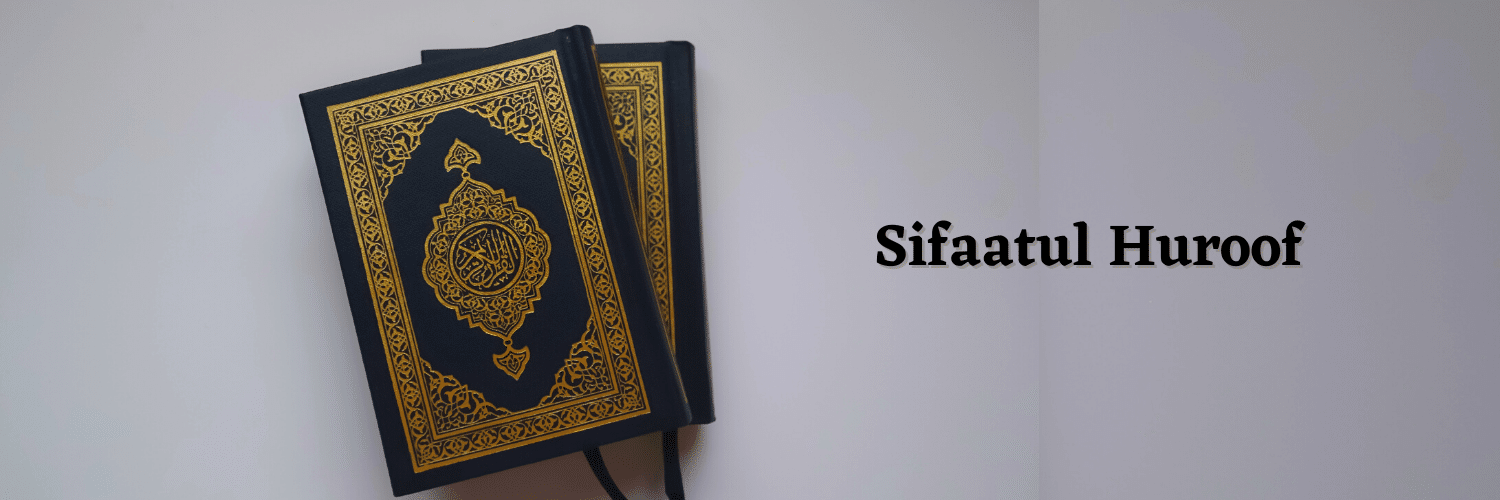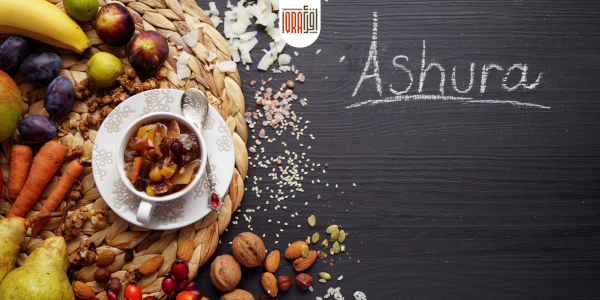As we encounter new people in our lives, we pick up on their characteristics, their qualities and way of being. We learn to appreciate or criticise these. In the same way, the letters of tajweed all have rights which we must abide by. They have characteristics, or qualities, most of which we must embrace, and few which we must avoid…
Sifaatul huroof [1]: directly translates to “characteristics of the letters”. It is important to study these to ensure they are present during recitation, such that letters emerging from the same makhraj (point of articulation) are differentiated. Perfection in pronunciation cannot be obtained unless both the sifah (characteristic/quality) and makhraj are correct.
![]()
Sifaatul huroof are divided into two categories:
1. Sifaatul laazimah (al-thaatiyyah) [2]
translated to ‘permanent characteristics’ is that characteristic which is part of the makeup of the letter, it cannot be removed from it; it is a right [which must be exercised] of the letter.
2. Sifaatul ‘aaridah (al-zaa’idah) [3]
translated to ‘redundant characteristics’ is that characteristic which “adds to” or “completes” a letter, such that if it were to be removed from it, it would not affect the actual letter; it is an additional right [which must be exercised] of the letter.
![]()
In this post, we’ll hone in on sifaatul laazimah. Within this category, there are 17 characteristics spread across two branches. The first branch is sifaatul mutadaaddah[4] which means opposing characteristics (that is, for any given characteristic, there is an opposite characteristic). The second branch is sifaat ghayr mutadaaddah[5] which means characters without opposites.
![]()
Sifaatul Mutadaaddah
Five characteristics, with five opposites total ten of the 17 sifaat. Each letter has at least five characteristics, one from either pair of opposites.Below is the list of five pairs in the format of sifah, then opposing sifah.
1. Al-Hams ( الهمس ) – whispering: flow of breath upon pronunciation due to being fairly independent of the makhraj; applied to the letters
ت ث ح خ س ش ص ف ك هـ
gathered in the sentence
فَحَثَّهُ شَخْصٌ سَكَتْ
2. Al-Jahr ( الجهر ) – audibility: of the letters which traps air flow due to heavy reliance on the makhraj; applied to all the remaining letters not included in hams.
3. a) Al-Shiddah ( الشدة ) – strength/force: is when the flow of sound is trapped in the makhraj; this is due to a heavy reliance on the makhraj and is applied to 8 letters
أ ب ت ج د ط ق ك
gathered in the sentence
أجِدْ قَطٍ بَكَتْ
3. b) Al-tawasut/Al-bayneeyah ( البينية ) – is a middle characteristic, lingering betwen shiddah and rakhaawah (the opposite sifah); this is when the sound emerges but does not flow; applied to the letters
ر ع ل م ن
gathered in the sentence
لِنْ عُمَرْ
4. Al-Rakhaawah ( الرخاوة ) – weakness: such that there is a flow of sound upon pronunciation; applied to the remaining 16 letters not included in shiddah or al-bayneeyah.
5. Al-Isti’laa’ ( الاستعلاء ) – elevation: of aqsal-lisaan (deep area of the tongue) towards the roof of the mouth when pronouncing one of the seven isti’laa’ letters
خ ص ض ط ظ غ ق
gathered in the sentence
خُصَّ ضَغْطٍ قِظْ
these letters are sometimes referred to as “the grumpy letters”, because the lips move in when pronouncing them, and because they’re heavy – hence quite a mouthful to say!
6. Al-Istifaal ( الاستفال ) – lowness: referring to the lowering of the deep area of the tongue (aqsal lisaan) to the floor of the mouth during the emergence of the letter; applied to all the remaining letters not mentioned in isti’laa’. These letters are often called “the happy letters” because the lips form a small smile when pronouncing them.
7. Al-Itbaaq ( الإطباق ) – closing: referring to pressing the majority of the tongue against that which corresponds to it from the hard palate; it is applied to four letters
ص ض ط ظ
8. Al-Infitaah ( الانفتاح ) – opening: referring to the separation of the tongue (or most of the tongue) from the roof of the mouth upon pronunciation of a letter; applies to the remaining letters not mentioned in itbaaq.
9. Al-Ithlaaq ( الإذْلاق ) – ease or fluency: of the letters emerging from the tip of the tongue and lips, which are
ب ر ف ل م ن
gathered in the sentence
فِرَّ مَنْ لُبْ
10. Al-Ismaat ( الإصمات ) – refrain or restraint: of the emergence of the letter from within the mouth and throat; this rule relates to Arabic grammar, but can be taken as stated above for simplicity; applied to the letters not mentioned in ithlaaq.
![]()
Sifaat Ghayr Mutadaaddah
Encapsulates the remaining 7 of 17 characteristics. Some of the above letters have an additional sifah ghayr mutadaaddah. The actual sifah and it’s corresponding letter(s) are listed below.
1. Al-Safeer ( الصفير ) – whistling: that sound emerging from the tip of the tongue and upper front teeth, audible even when reciting in a whisper. Applied to the letters
ز س ص
with note that the letter zaay has a more buzzing sound than the whistling sound in seen and saad.
2. Al-Qalqalah ( القلقلة ) – vibration/echoing: occurs at the makhraj of the saakin letter upon pronunciation due to the letter’s strength (shiddah) and audibility (jahr) correlating to the prevention of breath and sound flow. (This means, when qalqalah is exercised, a burst of the sound and breath occur, hence making the letter audible). Applied to the letters
ب ج د ط ق
gathered in the sentence
قُطْبُ جَد
3. Al-Leen ( اللين ) – ease: in pronouncing the letter (emergence of the letter without exertion). Applied to the letters waaw saakinah and yaa saakinah that follow a fat-ha
وْ يْ
such as in the words
خَوْفٍ
Khawf
الصَّيْفِ
Al-sayf
4. Al-Inhiraaf ( الانحراف ) – inclination: of the tongue, such that the makhraj for the two letters laam ( ل ) and raa ( ر ) is slightly inclined from the makhraj of noon ( ن ). Another explanation of this sifah states: it’s the inclination of the letter after it emerges from it’s makhraj towards another makhraj. This applies to the letters
ل ر
such that laam inclines towards the tip of the tongue and the letter raa inclines back towards the makhraj of the laam.
5. Al-Takreer ( التكرير ) – repetition: or rolling the tongue upon pronouncing the letter. This quality applies to the letter
ر
and should be avoided by pressing the tip of the tongue against the hard palate and letting it ‘roll’ back once (to produce the sound of raa).
6. Al-Tafashee ( التفشِّي ) – diffusion: of air in the mouth upon pronouncing the letter. Applies to the letter
ش
![]()
7. Al-Istitaalah ( الاستطالة ) – elongation: referring to the length of the makhraj; or the extension of sound over the entire edge of the tongue. It is a characteristic of the letter
ض
and is particularly noticeable when the letter has a sukoon, such as in the word
الْفَضْلِ
Al-fadli
That wraps up the first category of sifaatul huroof. I’m hoping a cosy feeling has set upon you as you’ve realised that some of the sifaat ghayr mutadaaddah are actually tajweed rues we’ve covered before. Links to them are above.
![]()
Resources link:
–Makhaarij Al-Huroof document
–Muthakarah Fit-tajweed [page 53 – 56]
![]()
[1] صفات الحروف
[2] صفات لازمة – الذاتية
[3] صفات العارضة – الزائدة
[4] صفات المتضادّة
[5] صفات غير متضادّة





0 Comments
Oops comments are disabled